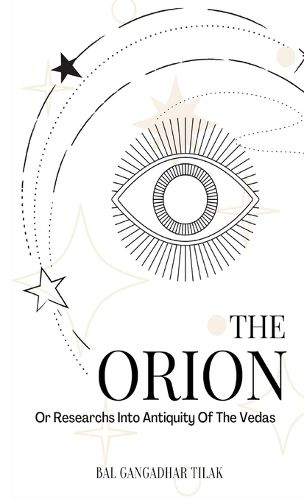Readings Newsletter
Become a Readings Member to make your shopping experience even easier.
Sign in or sign up for free!
You’re not far away from qualifying for FREE standard shipping within Australia
You’ve qualified for FREE standard shipping within Australia
The cart is loading…






ORION AND HIS BELT Agrahdyana Agrayana in the older works.. Probable derivation of hdyana--The Agrayana sacrifices--Their number and nature Performed every half-year in Vasanta and Sharad--Greek legends of Urion-Their similarity to Vedic legends--German traditions and festivities-Stag and hind--Twelve nights-Dogdays-All of which indicate the commencement of the year in Orion --Dr. Kuhn's explanation is insufficient--The usual adjuncts of Orion--His belt, staff and lion's skin--The aivyaonghana of Haoma in the Avesta--The yajnopavtta of the Brfthmans-- Their sacred character probably borrowed from the belt of Orion or Yajna--Use of mikhald, ajina and danda in the Upanayana ceremony--Probably in imitation of the costume of Orion or Prajftpati, the first of the Brahmans- Derivation of Orion from Agrayana-Its probability--Phonetic difficulties--Conclusion. In the last chapter 1 have quoted an observation of Plutarch that the Greeks gave their own name to the constellation of Orion, and have there discussed some Vedic legends which corroborate Plutarch's remarks and indicate that the vernal equinox was in Orion at that time. In the present chapter I mean to examine other legends which go to shew that the constellation of Orion was known and figured before the Greeks, the Parsis, and the Indians separated from their common home. and that the legends or the traditions so preserved, and perhaps the name of the constellation, can be naturally and easily explained only on the supposition that the vernal equinox was then near the asteism of Mrigashiras.
$9.00 standard shipping within Australia
FREE standard shipping within Australia for orders over $100.00
Express & International shipping calculated at checkout
ORION AND HIS BELT Agrahdyana Agrayana in the older works.. Probable derivation of hdyana--The Agrayana sacrifices--Their number and nature Performed every half-year in Vasanta and Sharad--Greek legends of Urion-Their similarity to Vedic legends--German traditions and festivities-Stag and hind--Twelve nights-Dogdays-All of which indicate the commencement of the year in Orion --Dr. Kuhn's explanation is insufficient--The usual adjuncts of Orion--His belt, staff and lion's skin--The aivyaonghana of Haoma in the Avesta--The yajnopavtta of the Brfthmans-- Their sacred character probably borrowed from the belt of Orion or Yajna--Use of mikhald, ajina and danda in the Upanayana ceremony--Probably in imitation of the costume of Orion or Prajftpati, the first of the Brahmans- Derivation of Orion from Agrayana-Its probability--Phonetic difficulties--Conclusion. In the last chapter 1 have quoted an observation of Plutarch that the Greeks gave their own name to the constellation of Orion, and have there discussed some Vedic legends which corroborate Plutarch's remarks and indicate that the vernal equinox was in Orion at that time. In the present chapter I mean to examine other legends which go to shew that the constellation of Orion was known and figured before the Greeks, the Parsis, and the Indians separated from their common home. and that the legends or the traditions so preserved, and perhaps the name of the constellation, can be naturally and easily explained only on the supposition that the vernal equinox was then near the asteism of Mrigashiras.